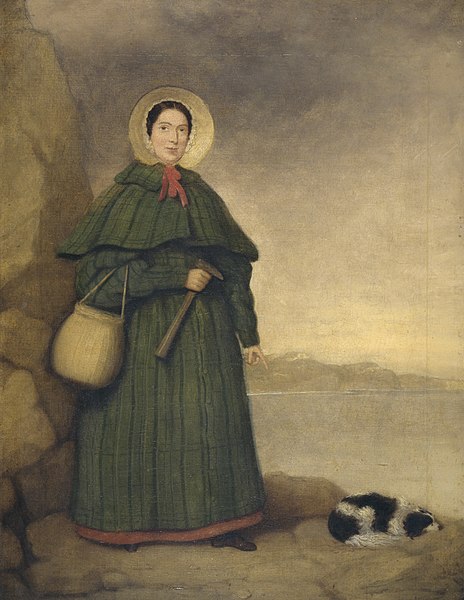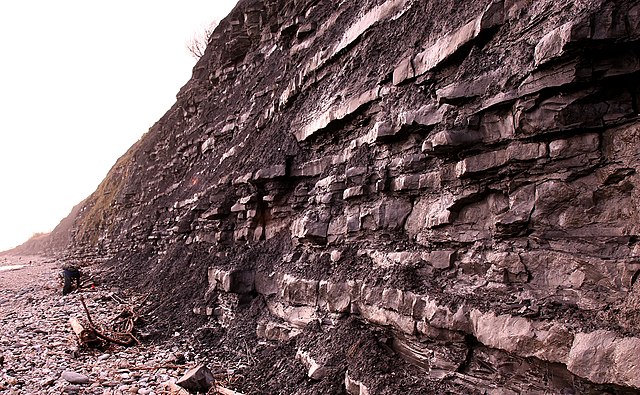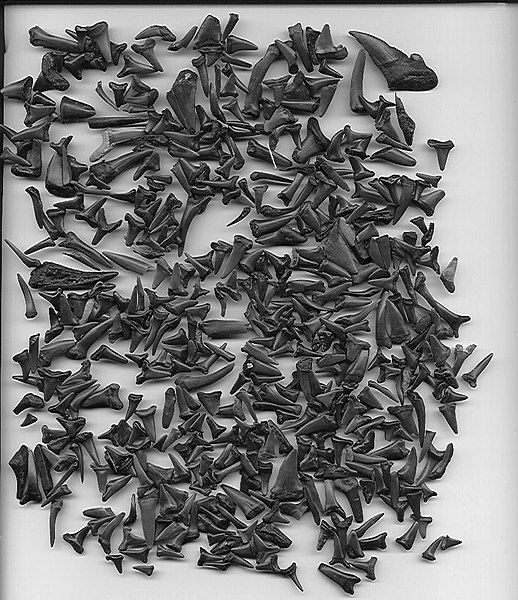Mary Anning was an English fossil collector, dealer, and palaeontologist who became known around the world for the discoveries she made in Jurassic marine fossil beds in the cliffs along the English Channel at Lyme Regis in the county of Dorset in Southwest England. Anning's findings contributed to changes in scientific thinking about prehistoric life and the history of the Earth.
Anning with her dog, Tray, painted before 1842; the hill Golden Cap can be seen in the background
Blue plaque where Mary Anning was born and had her first fossil shop, now the Lyme Regis Museum
1842 sketch of Anning's house
Blue Lias cliffs, Lyme Regis
Fossil collecting is the collection of fossils for scientific study, hobby, or profit. Fossil collecting, as practiced by amateurs, is the predecessor of modern paleontology and many still collect fossils and study fossils as amateurs. Professionals and amateurs alike collect fossils for their scientific value. A commercial trade in fossils has also long existed, with some of this being practised illegally.
Collecting fossilized shark's teeth is an easy way to begin collecting fossils. They are often found in abundance on public beaches. The teeth shown here were collected in Castle Hayne, North Carolina, and are from the Eocene and Cretaceous divisions.
College students collecting fossils as part of their invertebrate paleontology course. This is a roadside outcrop of Ordovician limestones and shales in southeastern Indiana.
Tarbosaurus and Saurolophus skeletons that were smuggled to the US, and subsequently returned to Mongolia, at Central Museum of Mongolian Dinosaurs
Mary Anning, a famous collector and seller of fossils








